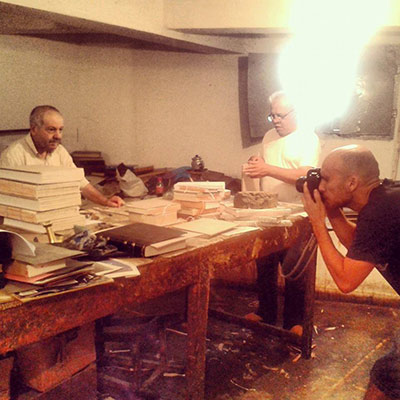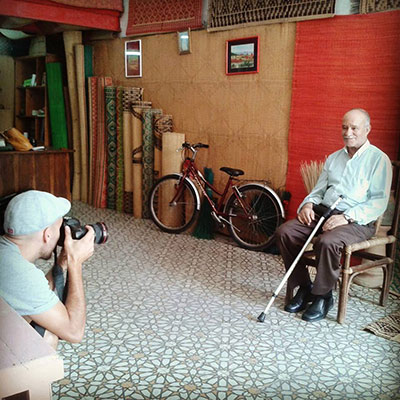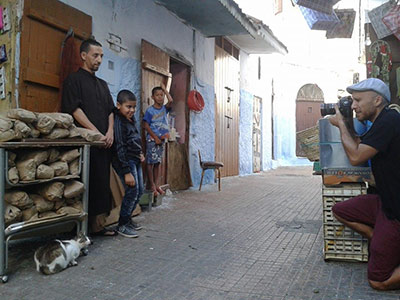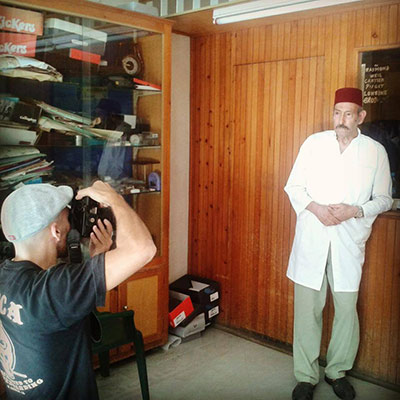La ciudad es un paisaje, un laberinto, un mapa cuyos caminos solo son perfectamente conocidos para la gente que los habita.
Ambos, personas y hábitat, cambian constantemente, de la mano los unos de los otros. Nuevas generaciones nacen, nuevos edificios se construyen. La ciudad se expande, crece, cambia de colores o asciende en función de lo que sus habitantes necesitan. Es una relación simbiótica; sin pobladores no hay ciudad y sin ciudad no hay un lugar donde la cultura común pueda desarrollarse.
The city is a landscape, a labyrinth, a map whose ways are only well known to the people who lives inside.
Both individuals and habitat, constantly changing together. New generations are born, new buildings are constructed. The city expands, grows, changes color or amounts depending on what their people need. It is a symbiotic relationship; without people there is no city and without city there is no place where a common culture can develop.
Así, de las necesidades surgen las costumbres; la necesidad de cocinar de una determinada manera deviene en cultura gastronómica, y así sucede con todas las actividades artesanales o comerciales. Las costumbres se convierten en fuertes elementos de identidad, y los artesanos y comerciantes en individuos de utilidad especial perfectamente reconocibles en el mapa urbano.
Thus, from the original needs the tradition appears ; the need to cook a certain way turns into gastronomy, and so it is with all craft and commercial activities. Habits become strong identity elements, and craftsman and merchants are particularly useful, individuals that are clearly recognizable in the urban map.
Sin embargo, hoy a principios del S. XXI nos encontramos ante una situación de profundo cambio cultural: la cultura y la economía global se desarrollan a un ritmo paralelo de la mano de la tecnología, y nunca había existido un mercado global como al que asistimos hoy. ¿Qué sucede entonces con la pequeña tienda o taller de cada barrio, qué sucederá con sus productos y su tradición, serán sustituidos por algo ajeno? ¿Qué consecuencias tiene esto en nuestra identidad colectiva?
However, today in the early XXIst century we face a situation of deep cultural change: the culture and the global economy is developing at a pace parallel to the rise of technology, and had never been an established global market like today. What happens then to the little merchants and craftsman in each neighborhood, what will happen to its products and its traditions, will they be replaced by something new from abroad and what impact this has on our collective identity?
«Antes de Olvidar» es un proyecto que se desarrolla en Rabat en 2014, con una fase de preparación fotográfica este mes de Agosto.
«Antes de Olvidar» rinde homenaje a una parte esencial del patrimonio inmaterial de la ciudad. A las personas que han desarrollado su actividad de una manera personal y contruibuído a la cultura de su ciudad.
El proyecto es una idea original de Nobulo organizado en colaboración con el Instituto Cervantes de Rabat.
Próximamente iremos desvelando mas detalles.
«Before we forget» is a project developed in Rabat in 2014, with a photographic session during this month of August.
«Before we forget» pays tribute to an essential part of the intangible heritage of the city. To people who have developed their activity in a personal way and have contributed to the culture of their city.
The project is a Nobulo original idea, organized in collaboration with the Cervantes Institute of Rabat.
We will be revealing more news soon.








